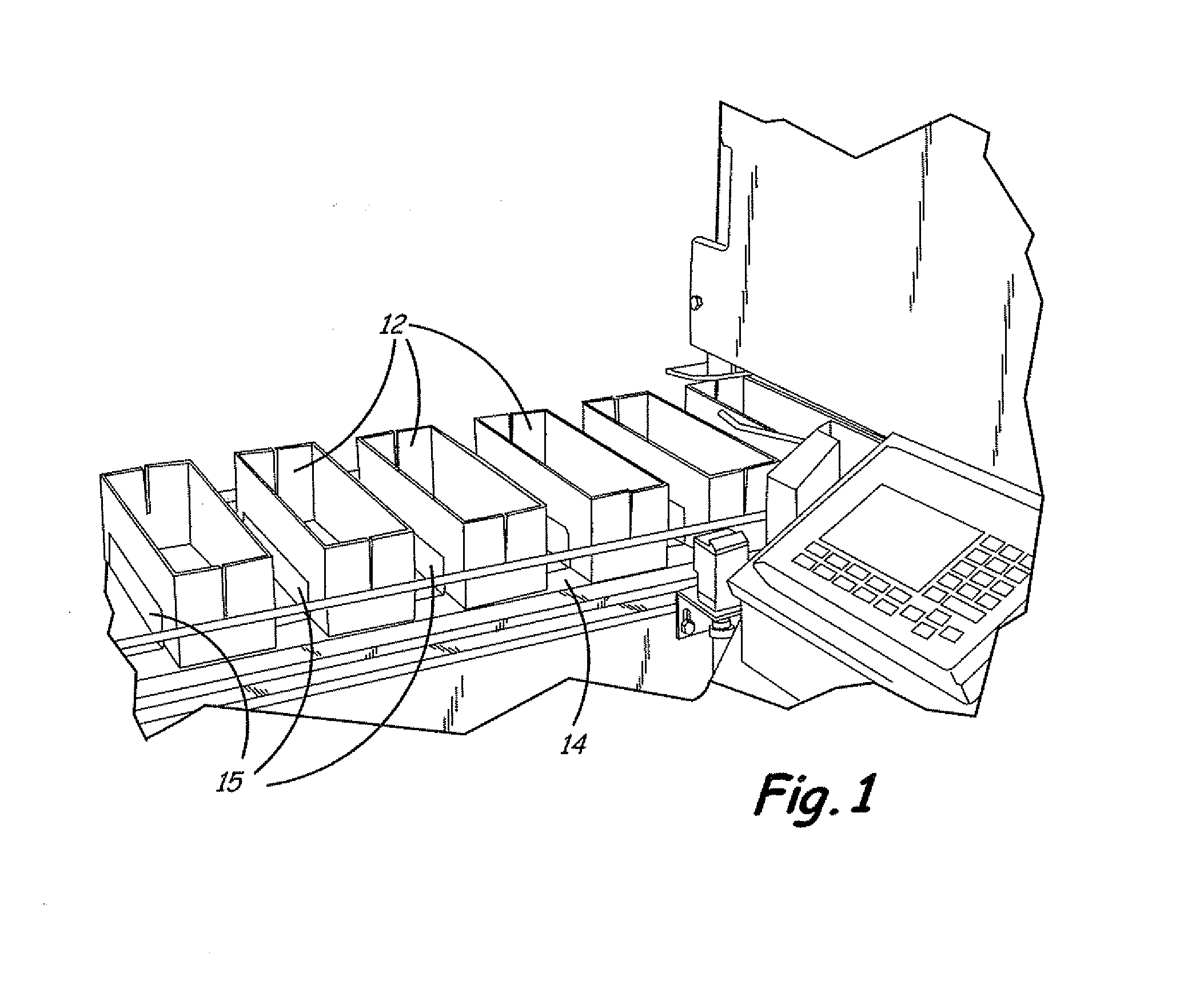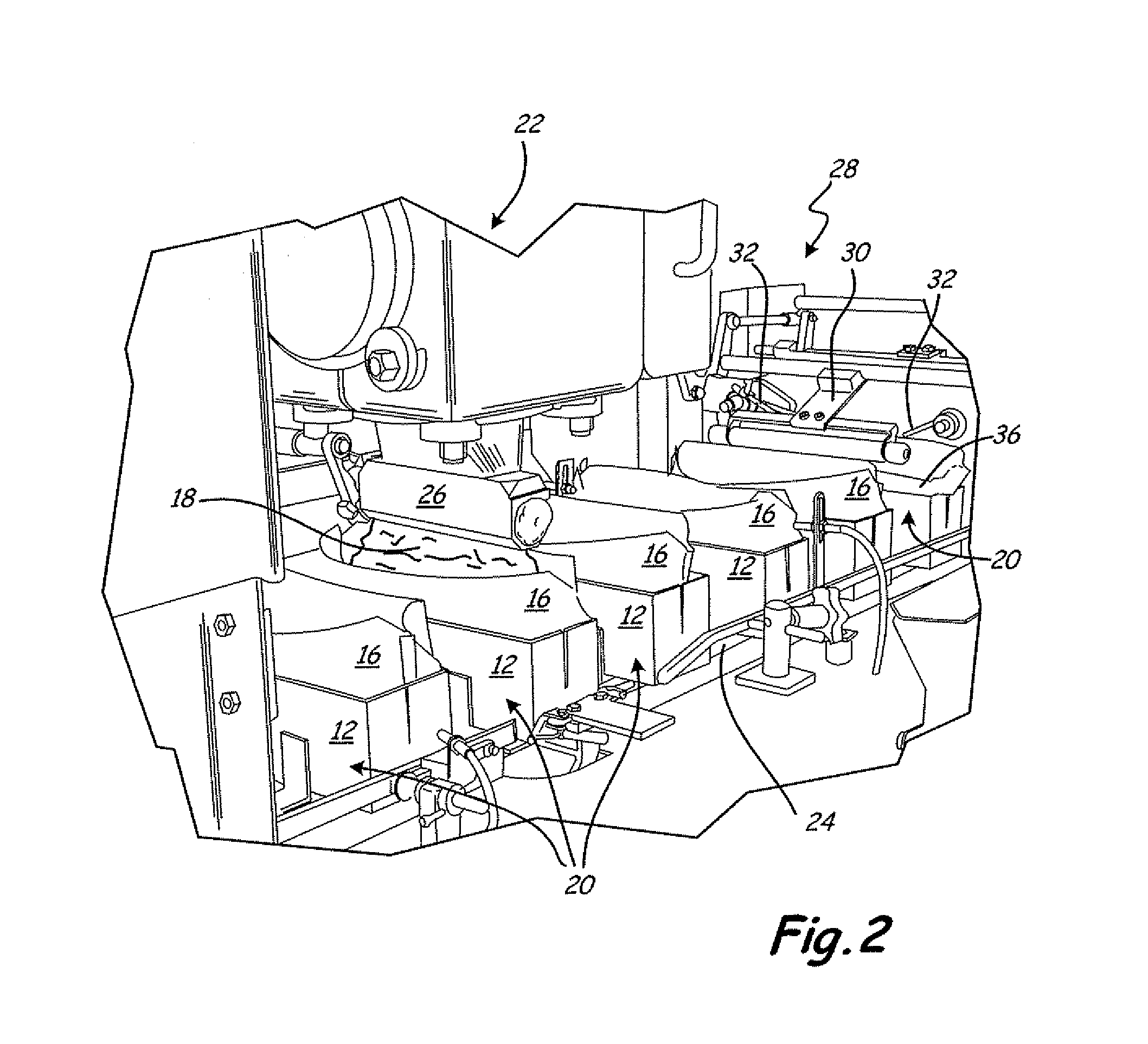Methods for sealing overlapped flexible packaging material using an electrical impulse through a conductive element
a technology of conductive elements and flexible packaging, which is applied in the direction of packaging foodstuffs, packaging goods, transportation and packaging, etc., can solve the problems of unsealed flap between the first seal line and the film edge, and achieve the effects of improving sealing the pouch, significant energy saving, and easy opening the pouch
- Summary
- Abstract
- Description
- Claims
- Application Information
AI Technical Summary
Benefits of technology
Problems solved by technology
Method used
Image
Examples
Embodiment Construction
[0023]The present invention relates to the use of a conductive element, such as a wire, to seal food packages, resulting in a package with a lap seal. The conductive elements can be, for example, on the bottom surface of a tamper. When the tamper with the conductive element(s) is placed on the overlapping layers of a pouch and activated, an electrical impulse is discharged through the conductive element and sufficient heat is generated by the conductive element to produce a lap seal in the overlapping layers of the pouch. The lap seal produced can include one or more seal lines as a result of the heated conductive element(s). This method of sealing is advantageous because the seal line provides a tight seal yet can be easily opened by the end user when desired. It is also amenable to a production line system and results in cost savings due to the low amounts of heat used intermittently.
[0024]In exemplary embodiments, this method is used for pouches made from polymeric film and does ...
PUM
| Property | Measurement | Unit |
|---|---|---|
| Time | aaaaa | aaaaa |
| Time | aaaaa | aaaaa |
| Width | aaaaa | aaaaa |
Abstract
Description
Claims
Application Information
 Login to View More
Login to View More - R&D
- Intellectual Property
- Life Sciences
- Materials
- Tech Scout
- Unparalleled Data Quality
- Higher Quality Content
- 60% Fewer Hallucinations
Browse by: Latest US Patents, China's latest patents, Technical Efficacy Thesaurus, Application Domain, Technology Topic, Popular Technical Reports.
© 2025 PatSnap. All rights reserved.Legal|Privacy policy|Modern Slavery Act Transparency Statement|Sitemap|About US| Contact US: help@patsnap.com



